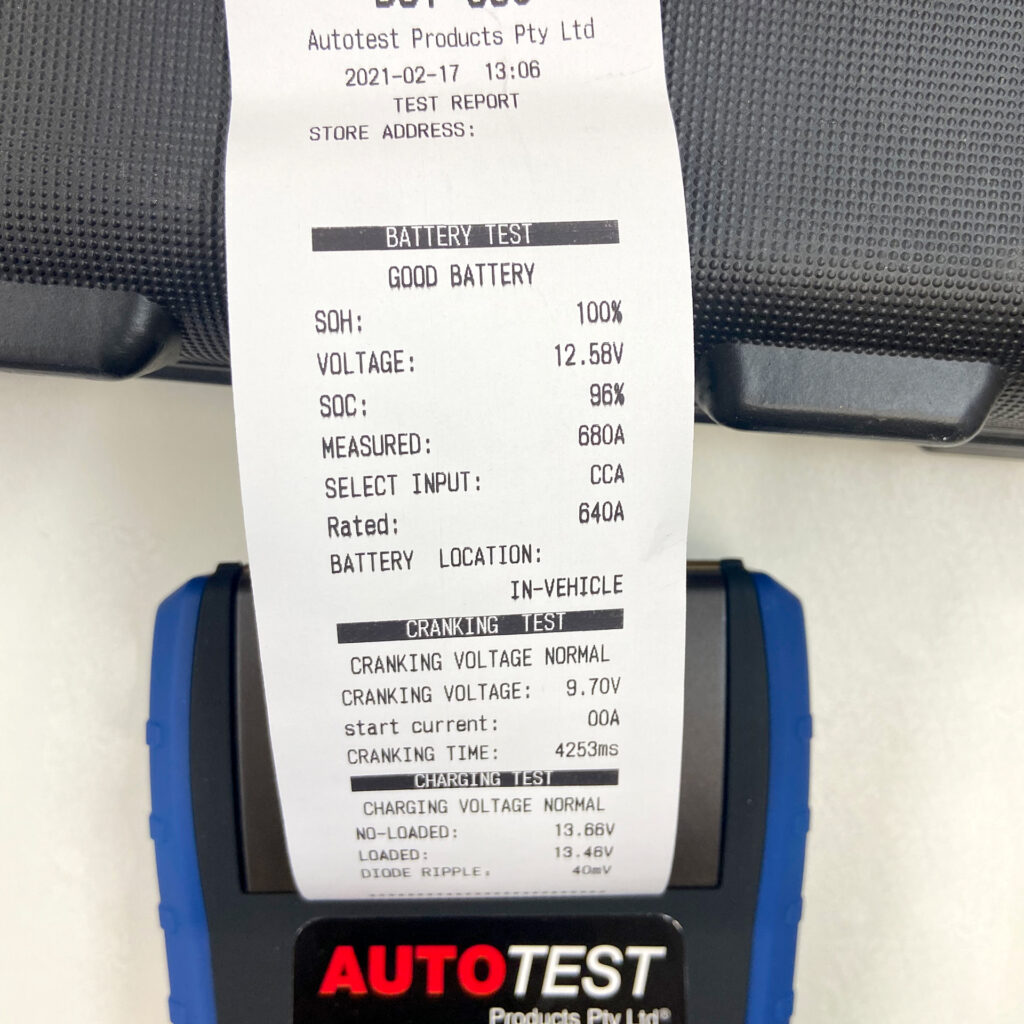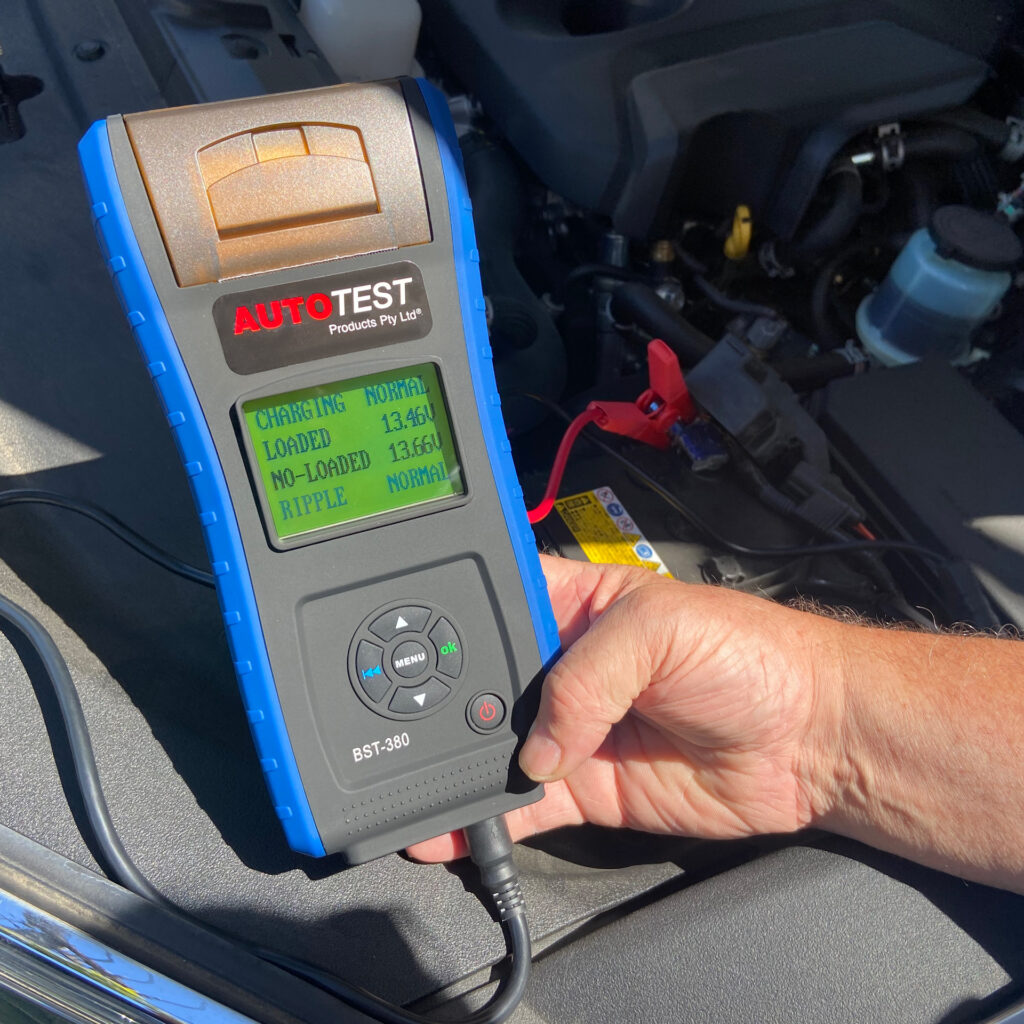The electric charge that your battery carries will not last a century. It can only carry so much electric charge for a specified amount of time and sooner or later it will discharge. In most cases, it is quite difficult to tell how much electric charge you have left.
Testing of batteries in a short comprehensive test is the dream of testing devices.
State-of-health is not measured but estimated based on available symptoms. If the symptoms are not well defined or obvious then a reliable measurement is not possible. When testing a battery and trying to determine the state of health you must consider
Capacity, ability to store energy.
Internal resistance, ability to deliver current.
Self-discharge, cell integrity and health
The top indicator of a battery health is capacity, a measurement that represents energy storage. A new battery should deliver 100 percent of the rated capacity. This means a 10Ah pack should deliver Ten amps for 1 hour. If the battery fails to perform after 20 minutes for example, then the capacity is only 33 percent. Capacity defines end of battery life.
Lead acid starts at about 85 percent and increases in capacity through use before the long and gradual decrease begins Lithium-ion starts at peak and begins its decline immediately, but at a very slow pace. Nickel-based batteries need several charge/discharge cycles to reach full capacity when new or after a long storage.
Knowing when to replace a battery is a difficult for many battery users. Battery problems only become apparent with increased breakdowns, which may be caused by a lack of battery maintenance.
Battery replacement depends on the application. Using battery Analysers typically set the replacement threshold at 80 percent capacity. In some applications you can keep the battery longer than others and cost benefit decisions need to be made in different situations.
Some batteries and portable devices include a fuel gauge that shows the remaining energy. A full charge always shows 100 percent, whether the battery is new or faded. Batteries with fuel gauges only indicate State of charge and not the capacity, and this is based usually on Battery Voltage.
More than 40 percent of all roadside car failures are battery-related, and that each third breakdown involves either a discharged or defective battery. Additionally, only a few starter batteries reach the average age of five years, and this applies to all cars. The average car is driven 13km per day and mostly in cities. The most common reason for battery failure is undercharge, developing sulfation. Battery failure during the warranty period is seldom a factory defect, driving habits are the main culprits. A careful assessment with advanced battery test instruments capable of looking at various failure symptoms can greatly reduce warranty claims.



The key problem lies in the difficulty of testing batteries, and this applies to repair shops, retail outlets, and service garages. There is a significant shortfall in a reliable method of estimating the state-of-charge, which is based mostly on voltage and charge counting. Assessing capacity, is the leading health indicator of a battery! Measuring the open circuit voltage and checking the internal resistance do not provide conclusive evidence of battery state-of-health.
A dead battery is easy to check and most testers are 100 percent accurate. The challenge comes in evaluating a battery in the 80–100 percent performance range while in use. Most service and repair workshops struggle to introduce good battery test procedures. This is mostly due to the unavailability of suitable technology that can assess a battery on the go.
Car battery tester uses the adjustable load test as gauge to decide whether your battery is still usable or need to be discarded and replaced. These testers measure the voltage drop when a voltage load that is half the battery’s CCA rating is used. And how does it work? The load is applied for about 15 seconds and the voltage drop is measured. Make sure that when you do this test the ambient temperature is not below 20⁰C. If the drop reading does not fall below 9.6 volts, then your battery is ideally conditioned, and is therefore, considered good. To illustrate this, let’s take an example: You have a battery of Cold Cranking Amp (CCA) rating of 600; if you apply 300 amps load for 15 seconds and the measured voltage does not fall below 9.6 volts then the battery is good. It is also possible to use a car battery tester in opposing temperature conditions, but only if you compensate for the difference in calculations.
This accurate method of testing is exactly how the AutoTest® Battery System Tester evaluates a battery. It not only gives a complete view of battery health, but is a conveniently portable, easy to use battery analysis tool designed for automotive service, fleet maintenance and breakdown assist diagnostic use. Taking the guess work out of battery diagnosis alerting you to replace batteries before they fail.
The Battery System Tester is a professional quality unit that tests all 12V auto batteries, including new auxiliary batteries for hybrids.
It uses advanced conductance testing technology to easily, quickly and accurately measure the actual cold cranking amps capability of the vehicle starting battery, the health of the battery itself, and common faults in the vehicle starting system and charging system. It can help maintenance personnel to identify problems quickly and accurately, thus leading to efficient vehicle repair.

For more information see our Battery Tester and Clamp Set, or contact us directly for a quote.
Test Functions:
Optional Extras:
Keep your workshop and equipment updated!
Subscribe to our newsletter for exclusive sales, discounts, and the latest news.
Sign up today!